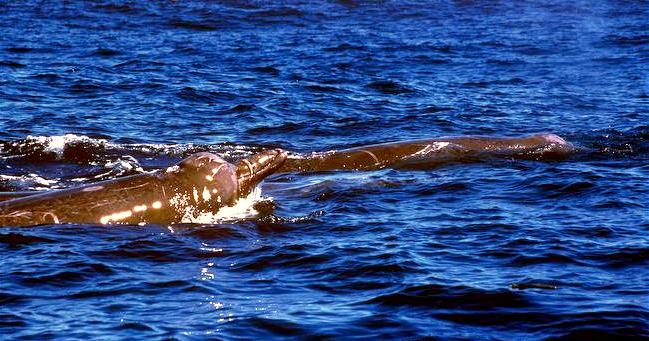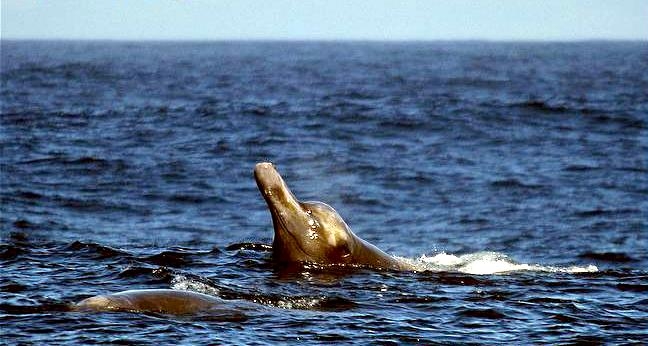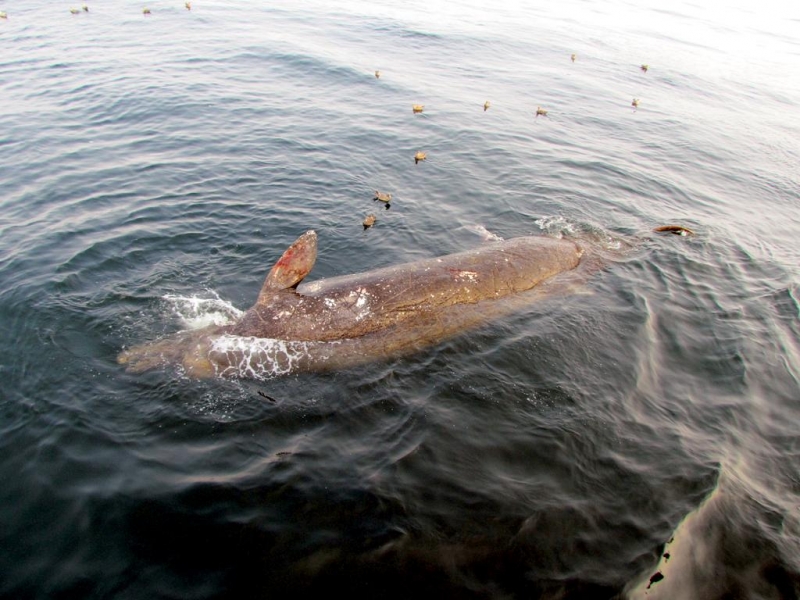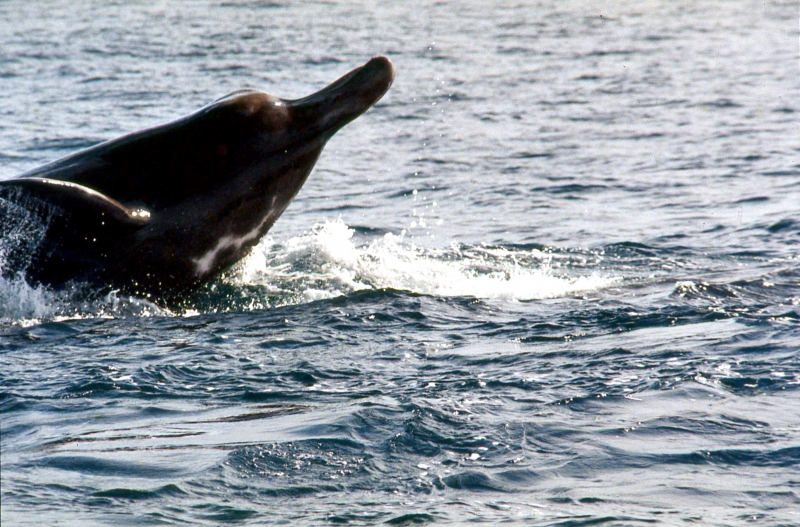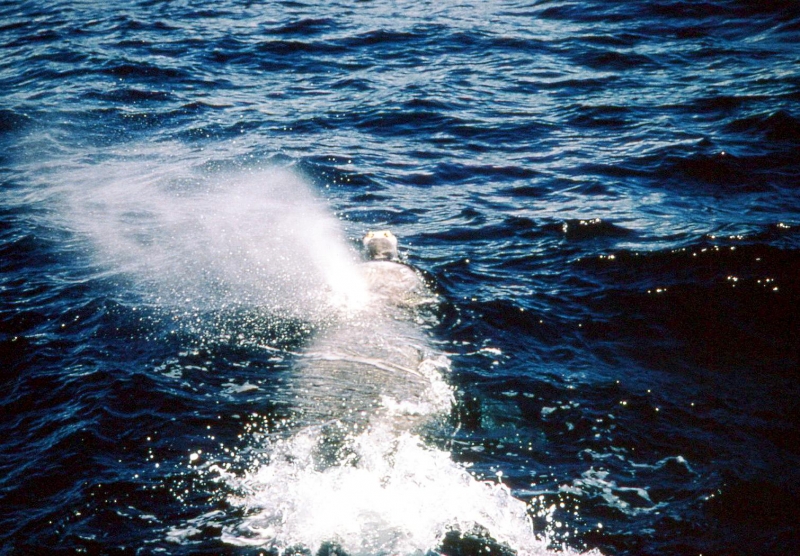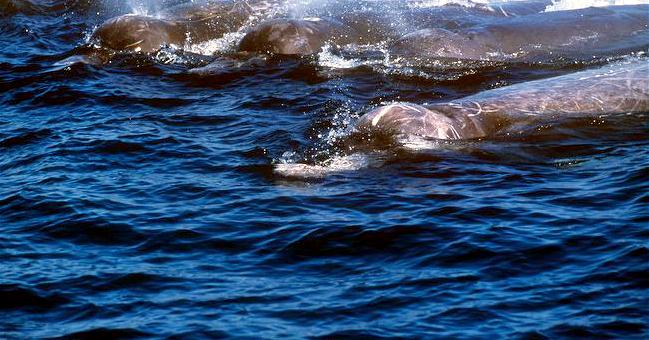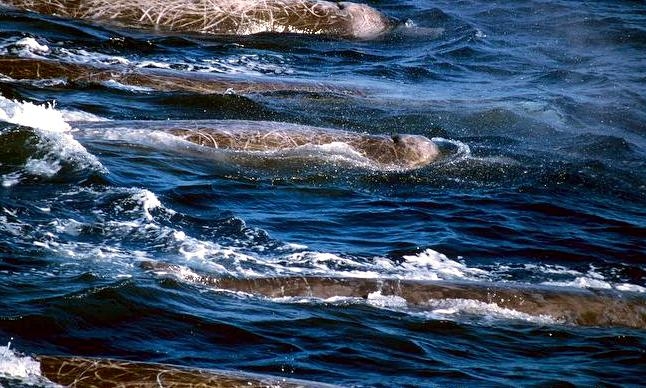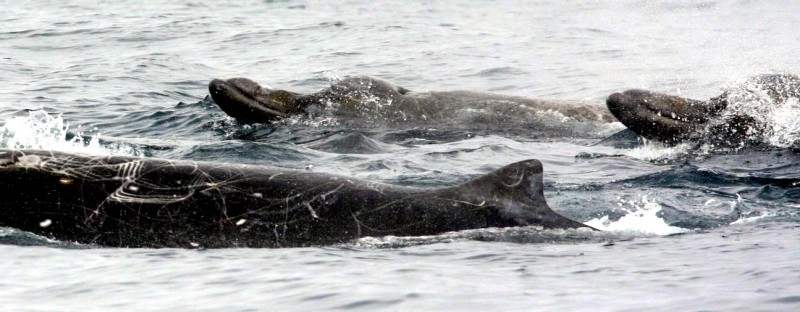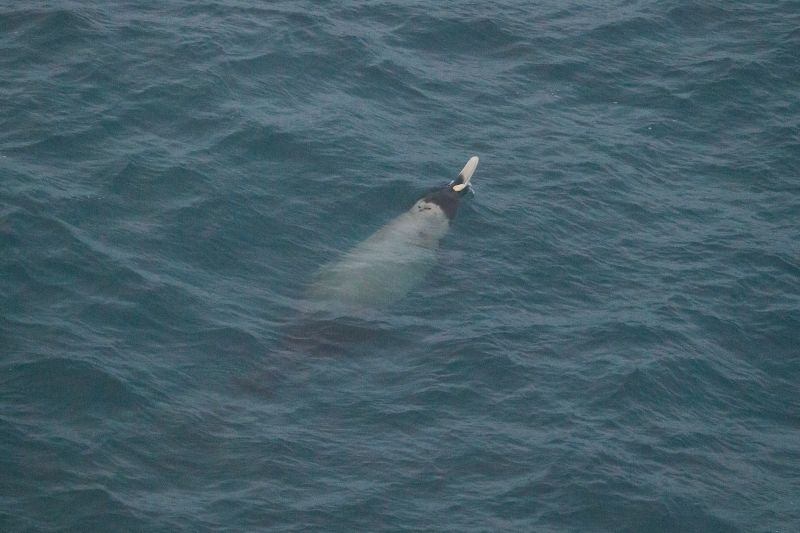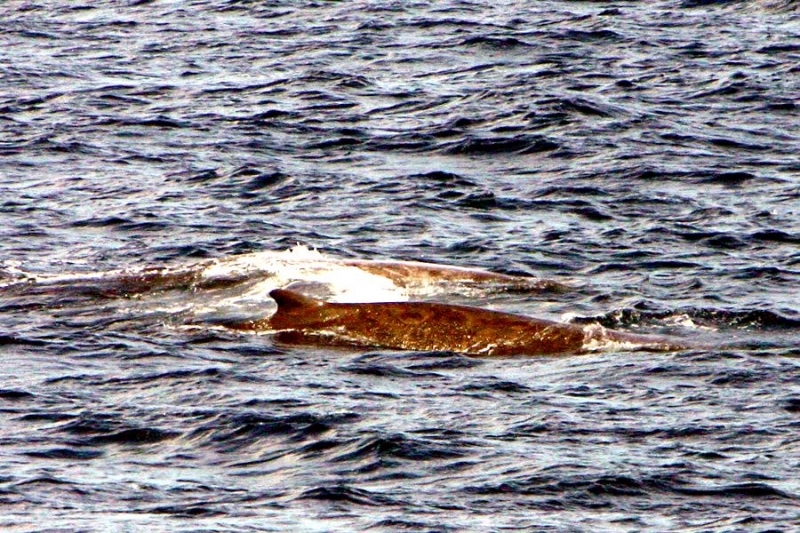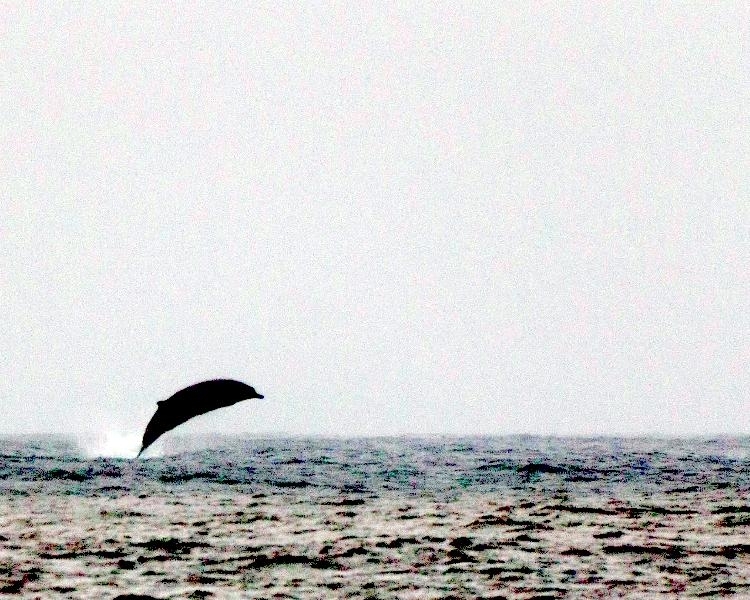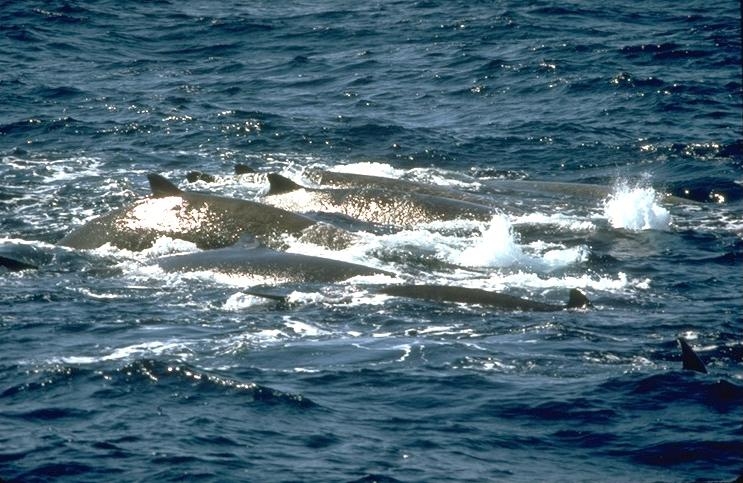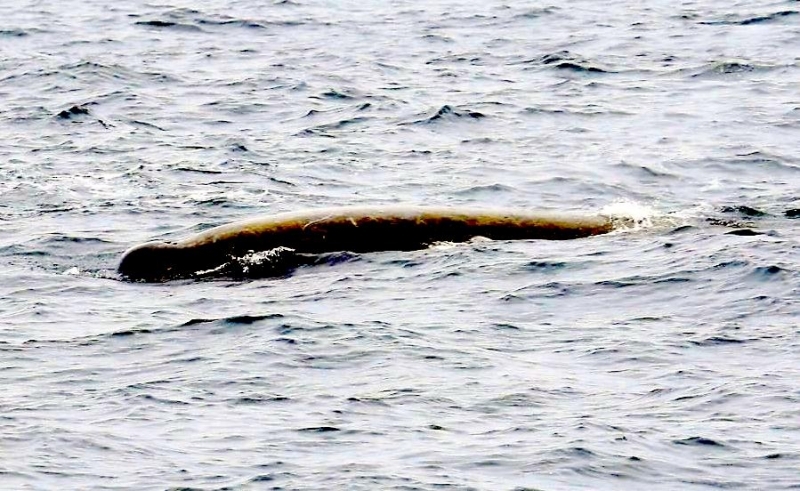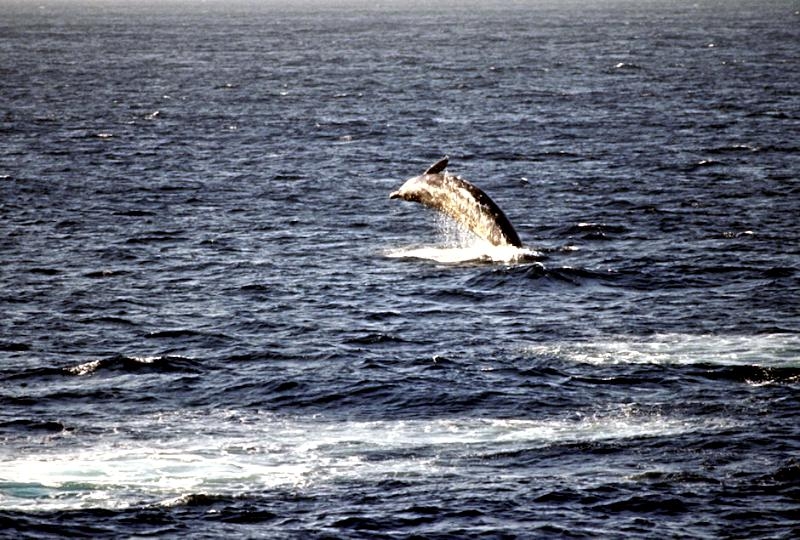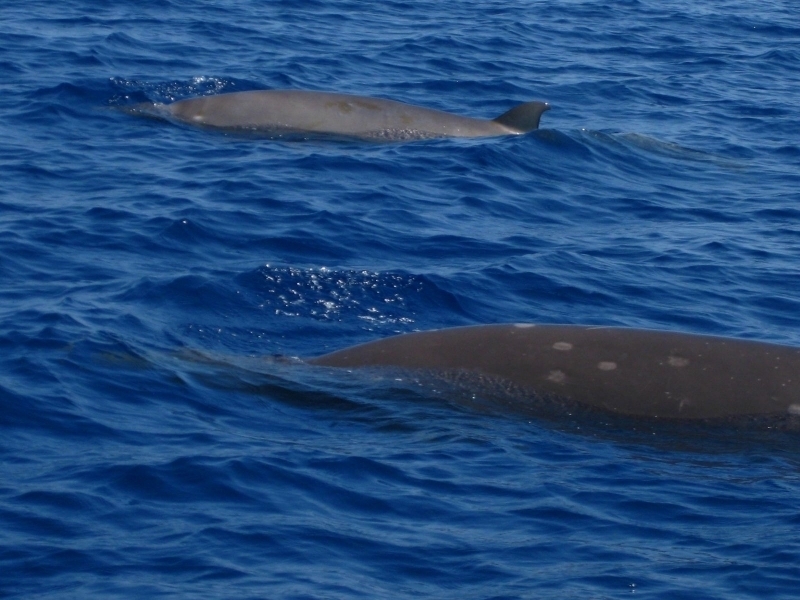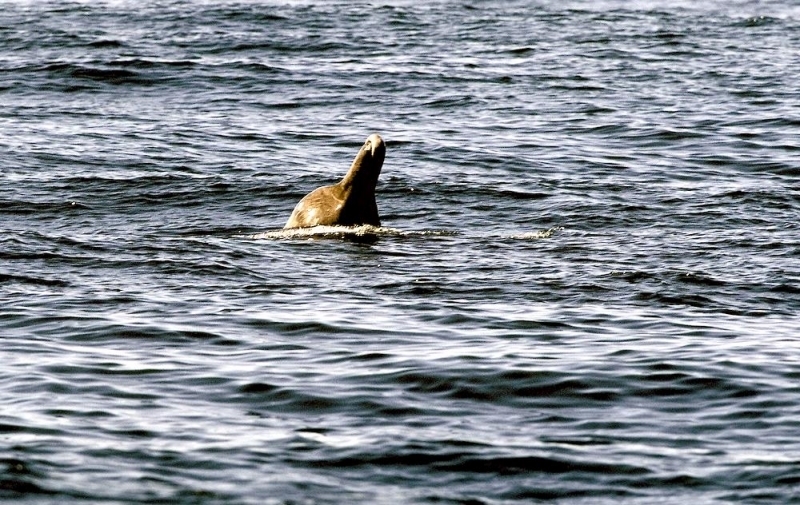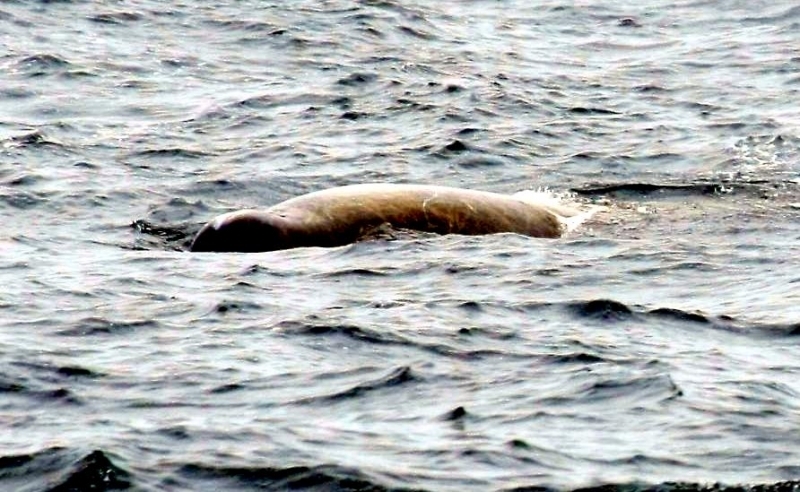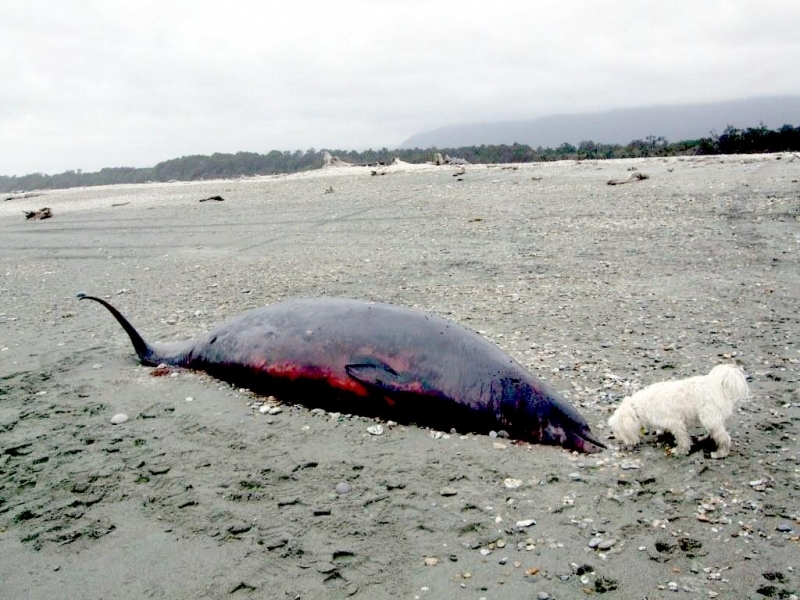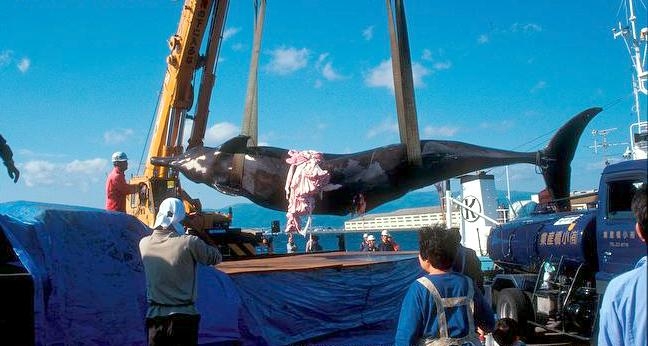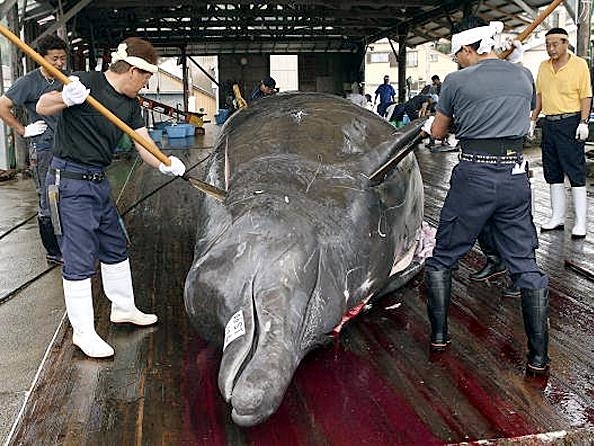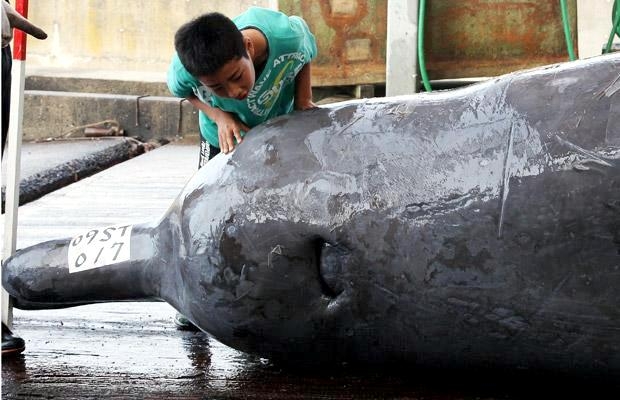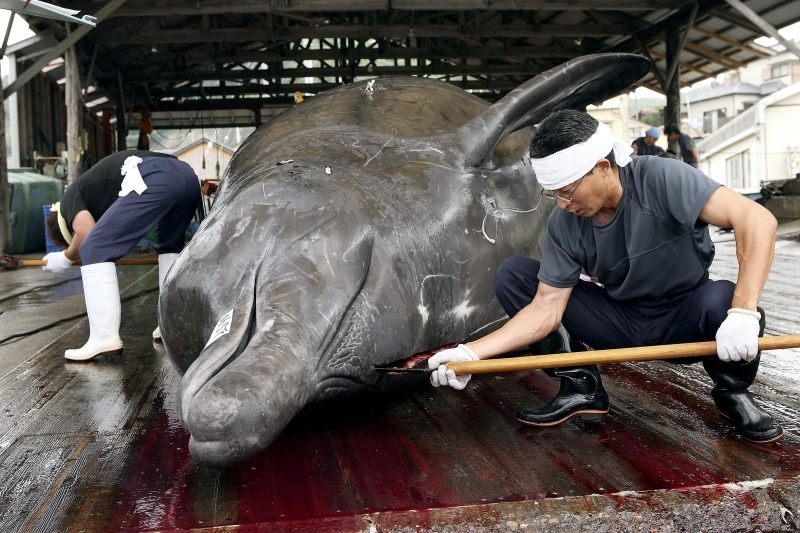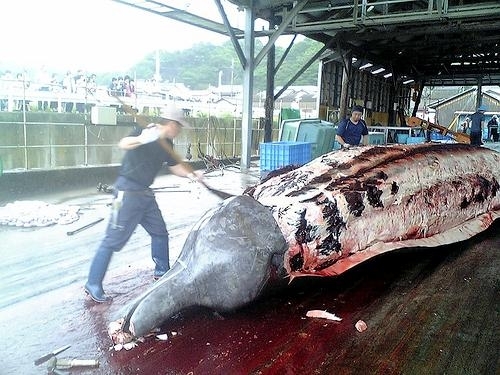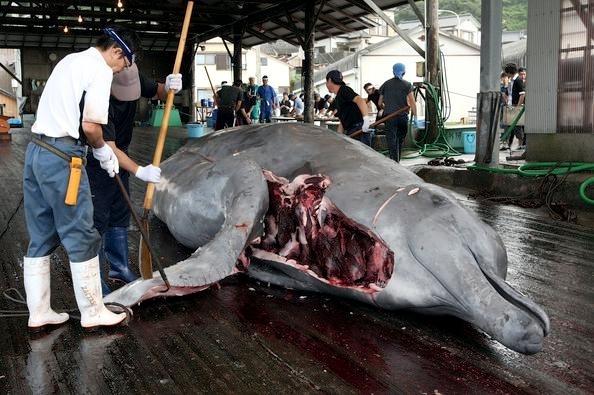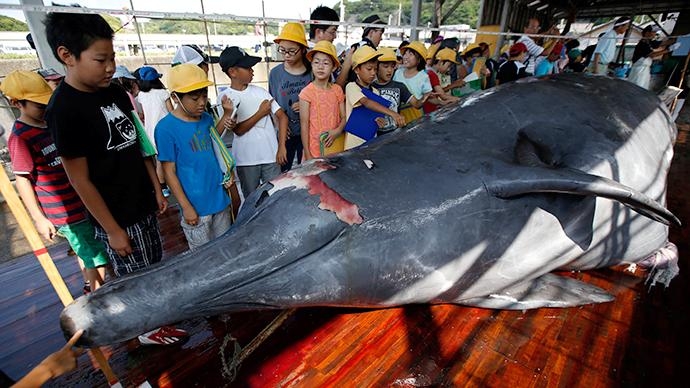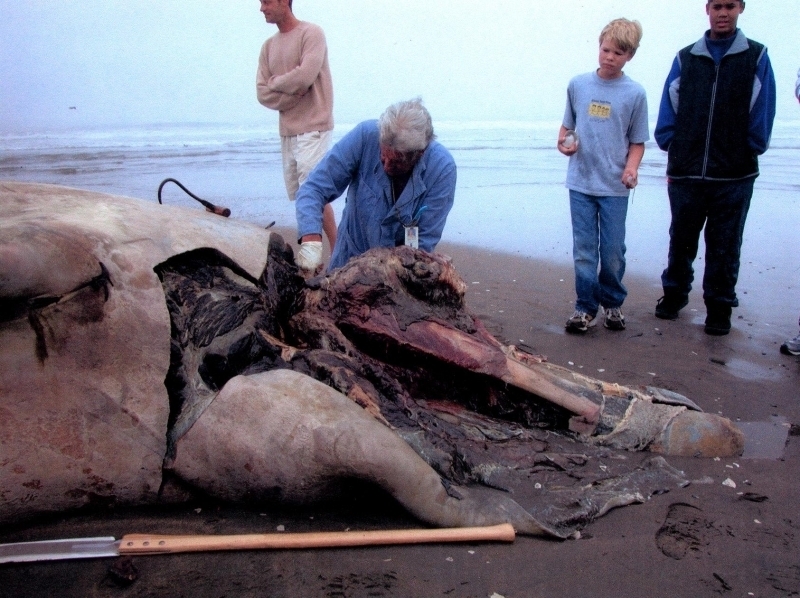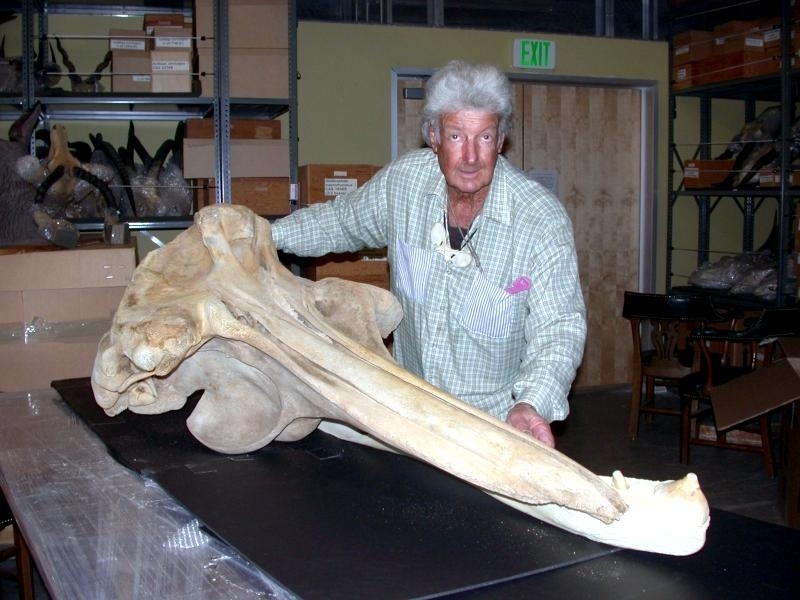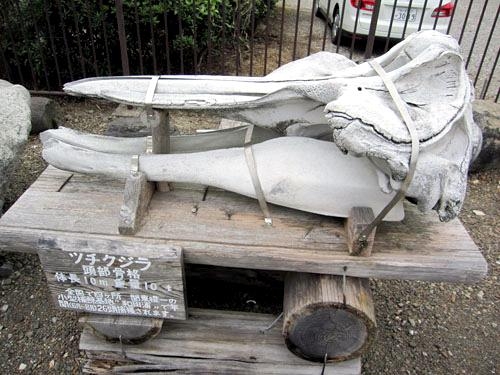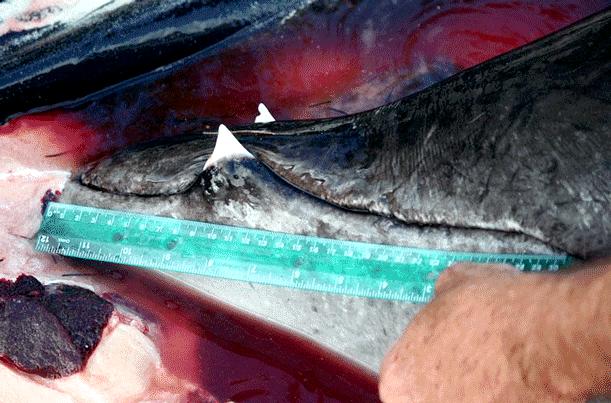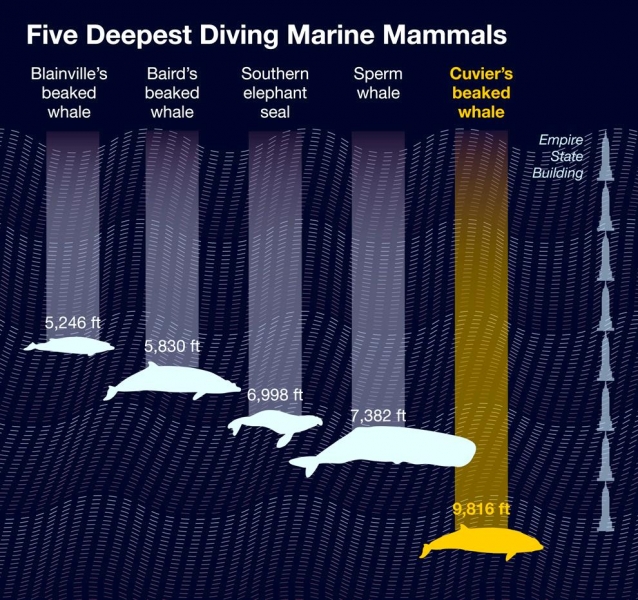“Berardius bairdii”
Baird’s Beaked Whales also known as North Pacific Bottle-nosed Whales, are the largest of the beaked whales reaching up to 12.8 meters in length. The species was named for Spencer F. Baird of the Smithsonian Institution, a well-known naturalist in the late 1800’s. This whale species has a small head, which equals about 1/8 of the total body length. The Baird’s Beaked Whale has a distinctive bulbous forehead that slopes steeply to a long, thin beak similar to a dolphin’s beak. When it surfaces to breathe, its head exits the water at a steep angle allowing the bulging forehead, beak and teeth to be seen clearly. The lower jaw extends 10 centimeters beyond the upper jaw exposing 2 sets of teeth near the tip of the snout.Like many other whales, there are no teeth in the upper jaw and like many beaked whales there are 2 v-shaped throat grooves. The front pair of teeth in the lower jaw is about 9 centimeters long. A second pair of teeth is found 20 centimeters behind the front set which is about 5 centimeters. The large, round body of Baird’s Beaked Whale tapers toward both the head & tail. They are blue-gray to brown to black in color on the dorsal side and light gray on the ventral side. A small, triangular fin is located toward the posterior end of the body. The flukes equal about 1/4 the body length and are slightly rounded at the tips with no notch in the center. The small flippers on the anterior end of the body are rounded at the tips.
The blow of the Baird’s Beaked Whale is low & indistinct making them difficult to detect at sea. These medium-sized to moderately large whales have a single pair of grooves on the throat. There is a distinct snout and often the few teeth present are visible only in adult males. They have a single nostril or blowhole. Baird’s Beaked Whales are generally slender with a small dorsal fin placed towards the rear on the back. The rear edge of the flukes usually lacks a well-defined notch. These whales are deep divers and are rarely seen. Many species are known only from a few specimens and little is known about the life history & biology of the group. This species may be the only large beaked whale found in the North Pacific ranging from Japan to southern California/Baja and north toward the Bering Sea. These whales are a deep water species found mostly at depths greater than 1,000 meters. Sightings are infrequent as they rarely enter shallow waters. Sometimes seen in pairs, they usually travel in larger social pods of 6-30 animals. Their lifespan may be up to 70 years. Baird’s Beaked Whales prey on squid, octopus, mackerel, sardines and deep-sea fishes. Males may reach sexual maturity at 10-11 meters in body length, females at 10-10.3 meters. Calves measure 4.5 meters at birth. The gestation period is estimated to be from 12-17 months. It is thought that females have calves every 3 years.
